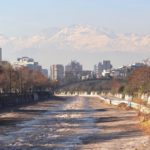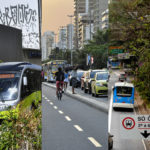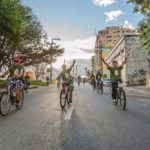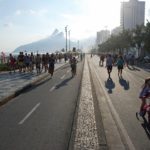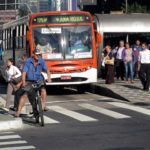Posts tagged with 'South America'
Amazonian cities are diverse in opportunities and needs. The region’s biodiversity is among the world’s most important, but its cities’ sustainability challenges are less well-known. These jurisdictions require financial support and capacity building to create sustainable, conservation-oriented, equitable, urban green ...

Public transport is one of the best, most cost-effective solutions available to address today’s climate and development challenges. Buses and trains can reduce greenhouse gas (GHG) emissions by up to two-thirds per passenger, per kilometer compared to private vehicles. The UN’s latest ...

By Sophie Boehm, Clea Schumer, Emma Grier, Louise Jeffery, Judit Hecke, Joel Jaeger, Claire Fyson, Kelly Levin, Anna Nilsson, Stephen Naimoli, Joe Thwaites, Katie Lebling, Richard Waite, Jason Collis, Michelle Sims, Neelam Singh, William Lamb, Sebastian Castellanos, Anderson Lee, Marie-Charlotte Geffray, Raychel Santo, Mulubrhan Balehegn, Michael Petroni and Maeve Masterson on November 20, 2023
Today’s climate change headlines often seem at odds with each other. One day, it’s catastrophic wildfires wreaking havoc around the world; the next, it’s an optimistic piece on the rapid scale-up of solar and wind power. Taken together, such stories ...

Over 50% of all transport-related emissions come from high-income countries, where people are more likely to own and depend on personal vehicles. Meanwhile, less than 1% is generated by low-income countries in regions like sub-Saharan Africa and Latin America. In these ...

To date, over 90 countries have set net-zero emissions targets, committing to help prevent the most harmful impacts from climate change. But questions remain around the credibility of many of these pledges and whether these goals will be met. Together, countries with net-zero targets — which ...

Many people point to forest restoration as a way to curb climate change, where replanted forests sequester carbon in trees and soils. But emerging evidence shows that restoration can provide non-carbon climate benefits, too — in particular, reducing heat and regulating rainfall. Here’s what ...

Glaciers do more than feed our rivers and lakes, they also serve as critical savings banks for water withdrawals when other sources dry up. In South America, the glaciers and snowpack that crown the Andes provide slow, consistent meltwater that ...

The winners of the 2015 Sustainable Transport Award have been announced! Organized by the Institute for Transportation and Development Policy (ITDP), the Sustainable Transportation Award (STA) recognizes outstanding vision and innovation in sustainable transport over the past year. Announced today ...

Eighty-five percent of Brazilians live, work, and play in cities. As such, urban mobility is a fundamental driver of quality of life for the vast majority of the country, enabling access to jobs, healthcare, schools, and other everyday needs. In ...

Belo Horizonte, Brazil is a city of remarkable cuisine, green spaces, and architecture. The city is increasingly designed using people-oriented urban development strategies that prioritize the people who make the city come alive. Even for outsiders, this state capital feels like ...

Peru was recently awarded €9 million ($11.14 million) for its urban transport Nationally Appropriate Mitigation Actions (NAMA) by the German and British NAMA facility. This climate finance award will allow the Peruvian government to leverage $50 million from development aid agencies – especially KfW, ...

Rio de Janeiro is one of the world’s leading cities injecting sustainability into its planning. In 2011, Mayor Eduardo Paes enacted an ambitious climate change law, setting a goal to avoid 20% of its emissions by 2020, based on 2005 levels. There ...

Brazil’s cities, home to 85% of the country’s population, are already feeling the effects of climate change. Intense rains and floods in Rio de Janeiro are causing fatal landslides with high social and infrastructure costs. Temperatures are climbing to record-breaking highs in Porto ...

This week in Lima, Peru, national-level decision makers, mayors, business leaders, international finance institutions, and civil society actors come together for the COP20 climate negotiations, and the world is expecting progress towards an international climate agreement expected to be reached ...

From 2009 to 2012, the number of traffic deaths on Brazilian streets has increased gradually each year – peaking in 2012, when 44,800 people lost their lives in traffic crashes. However, preliminary data from the National Health System (SUS) indicates ...

Page 1 of 11123...10...Last »
















